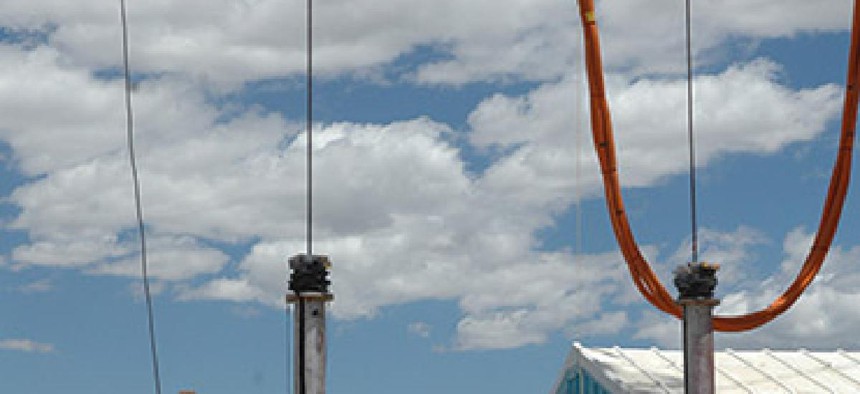What happens when you drop a nuclear warhead on concrete?

Sandia Labs test is designed to replicate a crane accidentally dropping the weapon's re-entry body onto a concrete surface.

Sandia National Labs' 185-foot Drop Tower Facility near Albuquerque, N.M., was used to gather data on the durability of the W88 ALT 370 warhead.
Gathering data for the latest nuclear warhead design is as nuanced as gathering intricate computer modeling data from flight tests and as brutally honest as dropping a nuclear warhead's shell onto a concrete slab to see if it breaks.
Researchers at Sandia National Labs, who are responsible for validating designs, improving computer modeling and updating component specifications for the W88 Alt 370 (alteration), have finished gathering data from two tests for an upgraded version of the US W88 nuclear warhead used in the Trident II submarine-launched ballistic missile.
And, according to a statement from the labs, the W88 Alt 370 is cleared to move forward.
The Critical Radar Arming and Fuzing Test (CRAFT) was the first flight test of a prototype radar for the W88 ALT 370. CRAFT demonstrated how the radar performed during re-entry through plasma generated by the hypersonic speeds at which the warhead travels. The June CRAFT test, according to Tim Edwards, manager for the program's technical basis and qualification activities, was the first of several planned tests intended to demonstrate the upgraded system's performance. It was also the first flight test unit Sandia and its partners, Los Alamos National Laboratory, the Kansas City Plant, and Pantex, delivered to the Navy for full-scale testing under the program.
The second test was more straightforward -- and possibly a little alarming, if you're not familiar with nuclear weapons design tests.
In its first "drop test" of the W88 warhead since 1987, Sandia researchers hoisted an unarmed version of the weapon's re-entry body on a crane and dropped it almost 200 feet to smash onto a concrete slab below.
The test is designed to replicate a crane accidentally dropping the re-entry body onto a concrete surface, according to the lab and helps develop evidence that the shell would remain safe during an accident. The test was conducted at Sandia's 185-foot Drop Tower Facility near Albuquerque, N.M., using the same handling gear a crane would use to move the weapon.
Sandia said it will use vibration and shock measurement data from the test to update specifications for components in the weapon. It also will use the information to validate computer models designed to apply the results to other drop scenarios, since it's not possible to replicate every possible accident in tests, according to the lab.
NEXT STORY: How to launch a successful API initiative





